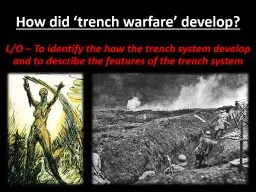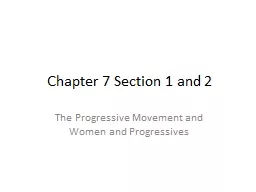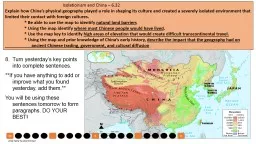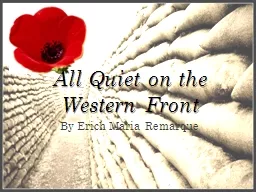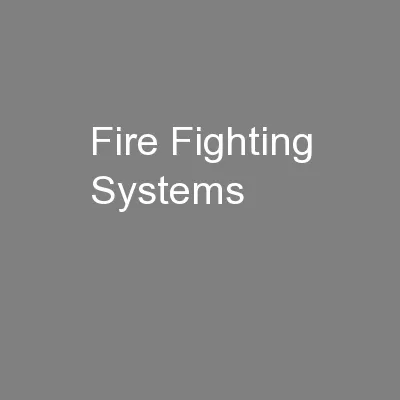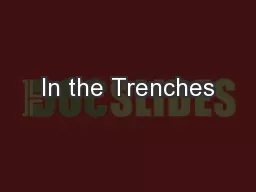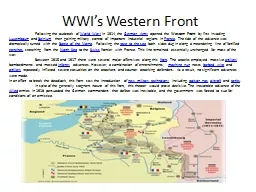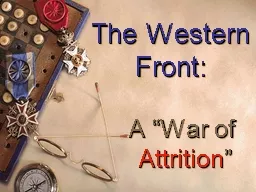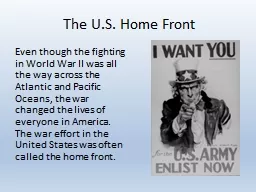PPT-What was the fighting like on the Western Front?
Author : tatiana-dople | Published Date : 2015-10-20
LO To identify the main changes in warfare brought about by the First World War The Race to the Sea The Battle of the Marne was a turning point The Schlieffen
Presentation Embed Code
Download Presentation
Download Presentation The PPT/PDF document "What was the fighting like on the Wester..." is the property of its rightful owner. Permission is granted to download and print the materials on this website for personal, non-commercial use only, and to display it on your personal computer provided you do not modify the materials and that you retain all copyright notices contained in the materials. By downloading content from our website, you accept the terms of this agreement.
What was the fighting like on the Western Front?: Transcript
Download Rules Of Document
"What was the fighting like on the Western Front?"The content belongs to its owner. You may download and print it for personal use, without modification, and keep all copyright notices. By downloading, you agree to these terms.
Related Documents

